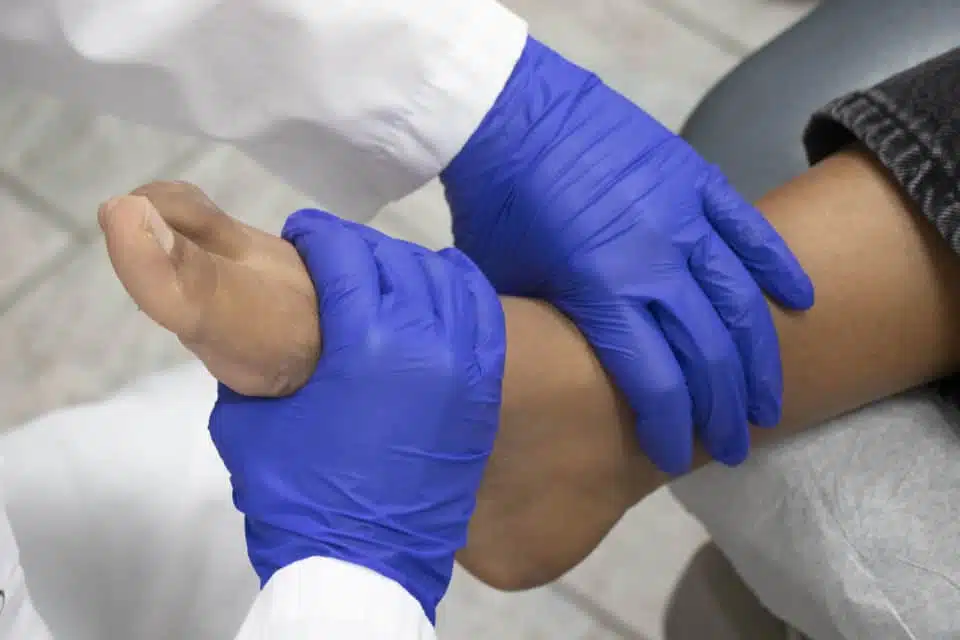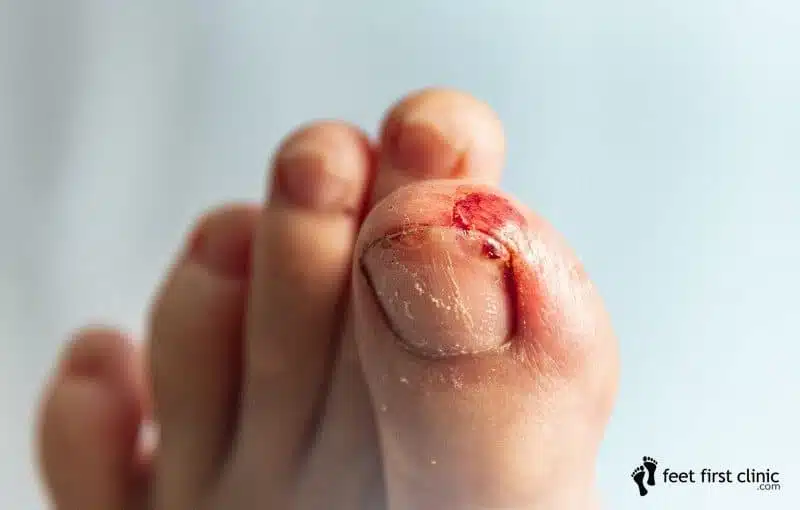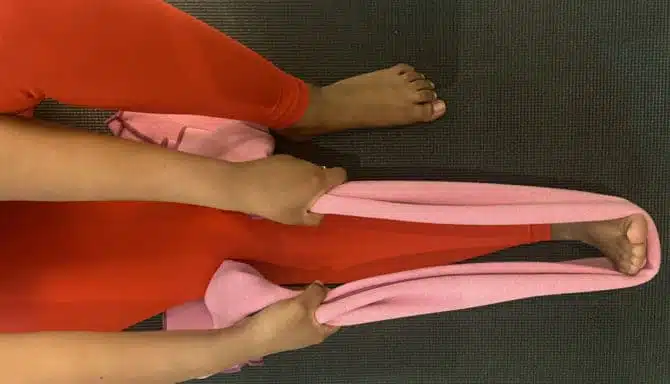Injuring your foot can be scary – especially if you don’t know what has caused it! Despite their size, feet are complicated parts of the body. The foot has 26 bones, 30 joints and over 100 muscles, tendons and ligaments! So it’s safe to say, finding the cause of your pain isn’t always easy. Below, we’ve compiled the 5 most common foot injuries that we see at Feet First Clinic.
1. Plantar fasciitis
Is your heel or arch hurting? You may have plantar fasciitis. One of the most common foot injuries, this condition occurs when the tissue at the bottom of your foot, known as the plantar fascia, becomes inflamed. This tissue starts at your heel bone and extends all the way to the ball of your foot. The plantar fascia is extremely important, as it helps to support your arch and absorb shock.
Plantar fasciitis normally develops over time and feels like a sharp, stabbing pain in the heel when you take your first few steps in the morning or after sitting down for a while. Another common symptom of plantar fasciitis is arch pain. While it may subside after walking around for a bit, the pain may return after long periods of standing. Shoes with poor arch support, high impact sports, or prolonged walking/standing can cause plantar fasciitis. Poor biomechanics or an abnormal gait can also contribute to plantar fasciitis.
Plantar fasciitis can be treated in a few ways:
At home, try resting, stretching, and/or rolling a tennis ball on the arch of the foot to massage the inflamed area. At a foot clinic, your chiropodist may suggest shockwave therapy to repair the damaged plantar fascia (see the video below to learn more!), or custom orthotics to better support your arch and correct any underlying biomechanical issues that are placing excessive strain on the plantar fascia. You should also invest in supportive footwear with strong arch support, or supportive insoles like Superfeet Green (which is specifically designed to address plantar fasciitis).
2. Achilles tendonitis or tear
As the famed Greek warrior would agree, pain in this tendon can be a real killer! The Achilles tendon runs from the heel to the calf. When it becomes inflamed, the condition is known as Achilles tendonitis and leads to swelling and pain on the back of the foot. The pain can be mild or sharp, but you’ll likely notice it when climbing stairs or trying to flex your foot. The causes of this common foot injury can range from overcompensating for weak leg muscles, tight calves, to strenuous physical activity.
The Achilles tendon can also tear, most often during contact sports. If this happens to you, you’ll likely hear a pop and the pain will be sharp and severe (Mayo Clinic). You will likely also have difficulty walking or flexing the foot afterwards. While some tears require surgery, others can be repaired through rehabilitation.
If your Achilles tendon is just inflamed or your doctor has agreed rehab is the best route for your tear, you’ll want to see a chiropodist to set up a treatment plan. This plan may include gently stretching the tendon and calf muscles, shockwave therapy to reduce inflammation and heal damaged tissue in the ankle area, and/or orthotics to slightly elevate your heel and relieve pressure on the Achilles tendon. Treatment by a chiropodist is highly effective when used in conjunction with physiotherapy to strengthen and condition the muscles and ligaments in the ankle area.
3. Ankle sprain
Ouch! A sprain occurs when the ligaments that hold your ankle together are stretched beyond their limits. This common foot injury normally happens when the ankle is twisted or rolled. Sprained ankles may swell or be sensitive to the touch. You may also have pain when you try to walk on it.
If you think you sprained your ankle, elevate it and put an icepack on the area to try and minimize swelling. Once your doctor says you are ready to start rehabilitation, a physiotherapist can come up with a treatment plan to get your ankle back in shape. You can also see a chiropodist for recommendations to improve your overall ankle health, both during your recovery and beyond. This can include exercises to improve your range of motion and taping/bracing to keep your ankle safe as your return to regular activity.
For sprained ankles that don’t heal properly, resulting in chronic ankle pain, a chiropodist can use shockwave therapy to help your body heal that injury once and for all.
4. Broken toe
Did you stub your toe recently? Or drop a heavy object on it? You may have broken your toe! A broken toe normally come with pain, swelling and/or a blackened nail. The good news is toes can quickly heal if you buddy tape the broken one to the one next to it.
However, if the pain and swelling persists, you may need further medical intervention and sometimes even surgery. Broken toes are also at risk for infection if the skin becomes cut near the injury. If the fracture extends to one of the toe joints, you may also be at risk for osteoarthritis, a form of arthritis that comes from wear and tear of the joint and improperly healed injuries.
If you’re concerned about your broken toe, book an appointment to see your doctor for medical imaging. You can also see a chiropodist for treatment options if your broken toe persists or leads to other foot issues.
5. Stress fractures
Just like your mind after a long day of work, stress can also affect your bones! Stress fractures are small cracks in the bone. They are often caused by overuse – such as repeatedly running or jumping up and down. With the amount of weight our feet bear, stress fractures are often found in the bones on the lower leg and foot. Over 25% of stress fractures are found in the metatarsals – the five toe bones located in the ball of the foot – making it one of the most common foot injuries!
While the pain may be mild at first, stress fractures tend to get worse over time and may even cause swelling. Resting and icing the area can help to alleviate pain and inflammation; though you may require a walking boot to take the pressure off the fractured bone.
What should you do if you have foot pain?
While these are the most common foot injuries we see at Feet First Clinic, we always recommend you see a health care practitioner to receive a proper diagnosis and treatment plan if you’re experiencing pain.
















